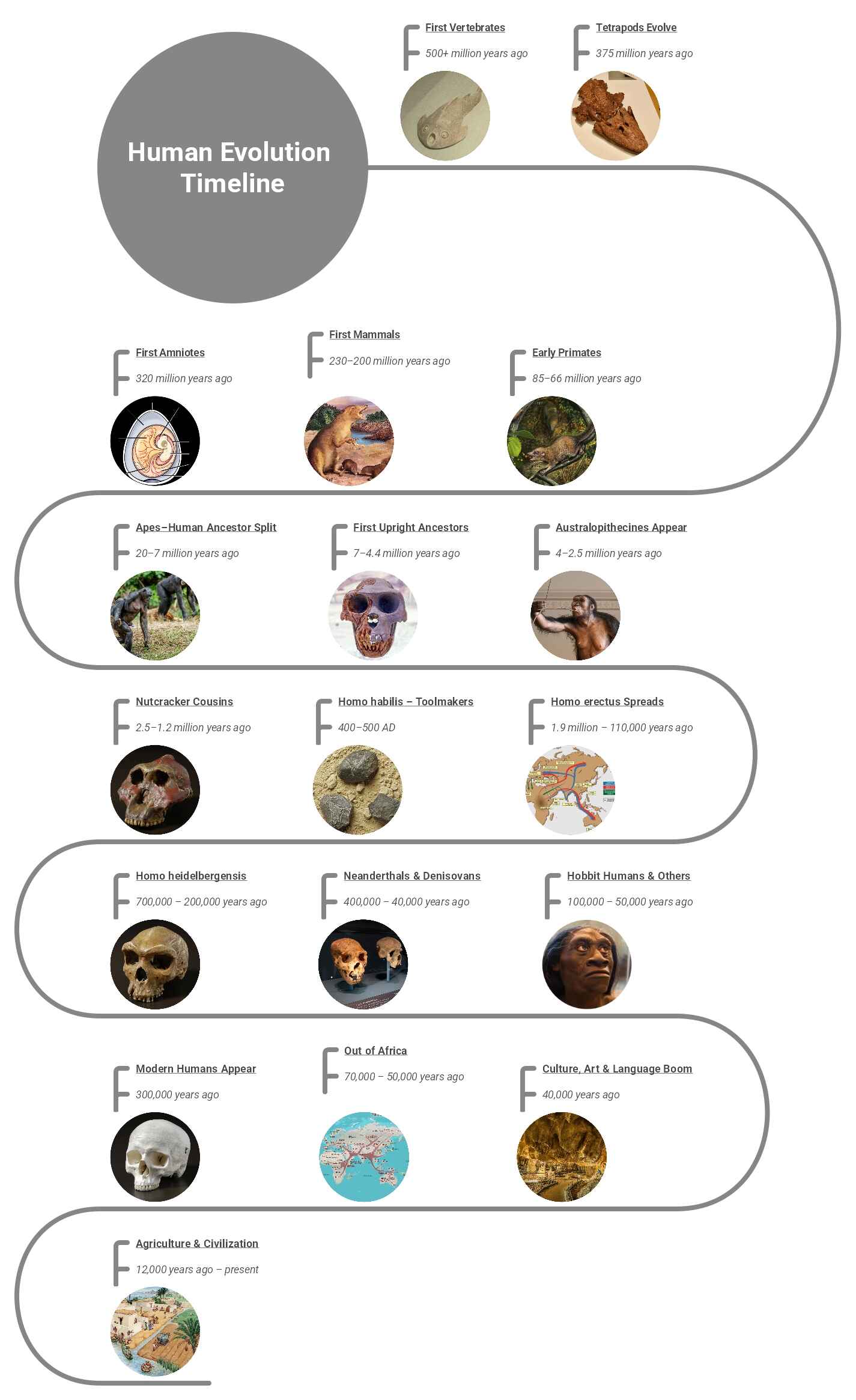You’re on TikTok, watching a cat dance to 80's music. Sounds fun, right? But here’s the truth: that opposable thumb you’re using to scroll? It has roots in early ocean creatures but really took shape in tree-dwelling primates millions of years ago.
We didn’t just wake up one day as humans with phones and a cup of coffee in hand. Nope. We walked (and crawled, and swam) through millions of years of wild changes. From swamp-crawling fish to fire-starting Homo sapiens, your family tree is an action movie.
This isn’t just science. It’s your origin story. We’ve broken it down step by step, so it’s easy to follow. Every ancestor had a life. Every stage meant something. And every single part of that journey led to you.
Let’s find out those roots together. It’s science, yes. But it’s also your story.
In this article
Part 1: Timeline of Human Evolution
Humans' evolution story stretches back hundreds of millions of years - through fish, furry mammals, upright walkers, and fire-users.
Every step of the way, evolution shaped who we are today. And the coolest part? You can still see traces of those ancient ancestors in your body, brain, and behavior. From how we walk to how we think, every detail has a backstory. And it’s your origin story.
First Vertebrates (500+ Million Years Ago)
Let’s rewind to a time when life was only in the water. Around 518 million years ago, during the Cambrian period, the first vertebrate-like animals appeared in the oceans. These jawless, fish-like creatures, such as Haikouichthys, had notochords and primitive backbones.
These early swimmers were simple, but they were a game-changer. Why? Having a backbone gave animals structure and flexibility. That single change eventually led to the incredible variety of animals we have today - from sharks to birds, from dinosaurs to you and me.
Tetrapods Evolved (375 Million Years Ago)
Here’s where things got adventurous. Some fish began using their strong, fleshy fins to push themselves around in shallow water. Over time, those fins turned into limbs - and voilà, tetrapods were born!
These early four-limbed creatures started exploring land. It was a bold move! Imagine slithering through swamps, dealing with gravity for the first time. But they made it. And their success paved the way for all land animals, including mammals, reptiles, and birds.
First Amniotes (320 Million Years Ago)
Then came the Amniotes. They could lay eggs on land thanks to a protective shell and fluid inside. Total game-changer.
This innovation let them spread far and wide across the dry land. Amniotes split into two key groups. One became reptiles (and eventually dinosaurs and birds). And the other one, it evolved into synapsids - our ancestors, the future mammals.
First Mammals ( 230–200 Million Years Ago)
During the age of dinosaurs, mammals were the underdogs. Literally. They were tiny, furry, and mostly came out at night to avoid getting eaten. But they had something special - warm blood and sharp senses.
These early mammals didn’t make a splash at first, but they were quietly evolving. Their warm-blooded nature and protective parenting helped them survive. When the dinosaurs went extinct, mammals were ready to shine.
Early Primates (85–66 Million Years Ago)
After the dinosaurs disappeared, mammals exploded in number and variety. Some of them took to the trees, evolving into the first primates. Living in forests, they developed great vision, flexible hands, and strong grips.
These features made tree life easier - grabbing branches, spotting predators, and moving fast. But they also became super useful for future humans. That tree-jumping ancestor? That's where we start to see the real beginning of the human story.
Apes and the Human-Ancestor Split (20–7 million years ago)
20 million years ago, the forests of Africa were filled with apes: orangutans, gorillas, chimpanzees, and the ancestors of humans. They were smart, social, and curious.
Then, around 7 million years ago, something big happened: our ancestors split off from chimps. We didn’t turn from chimps into humans - instead, we both came from a common ancestor. Today, chimps are our closest living relatives, but we’ve each followed our path since that ancient fork in the road.
First Human Ancestors Walked Upright (7–4.4 million years ago)
At this point, our ancestors were still small, still living in forests, but something had changed. They started walking on two legs. Not all the time at first, but enough to matter.
Walking upright freed up their hands for other tasks. It also helped them see over tall grass and travel longer distances. Sahelanthropus and Ardipithecus were among the early walkers. Their brains were still small, but their posture? That was a major leap toward becoming human.
Australopithecines Appear (4–2.5 million years ago)
Now things start to look more familiar. Australopithecines - like the famous “Lucy” walked upright regularly. They had human-like legs and feet, but their arms and hands still worked great in trees.
They weren’t tall; maybe 3 to 4 feet, and their brains were only slightly bigger than a chimp’s. But they were full-time bipeds, and that changed how they lived, traveled, and found food. The Laetoli footprints they left behind are still there today - a snapshot of a family walking through volcanic ash almost 4 million years ago.
Nutcracker Cousins (2.5–1.2 million years ago)
These guys were impressive... but not subtle. The Paranthropus species had huge jaws, big teeth, and skulls built for chewing super-tough plant material. Imagine having jaw muscles so big that they needed extra bone on your skull for support!
They were a side branch of our family tree - not direct ancestors. But they lived alongside early humans for over a million years. Their nickname, “Nutcracker Man,” says it all. Tough, specialized, and built for grinding roots and seeds.
First Toolmakers: Homo habilis (2.4–1.4 million years ago)
Then came Homo habilis; one of the first members of our own genus, Homo. They earned their name, which means “handyman,” because they made tools. Simple ones, sure; just chipped rocks, but that was a giant leap.
Tool use meant they could cut meat, crack bones, and do more with their hands than any creature before. Their brains were a bit bigger, too - around 600–700 cc. Not quite “Einstein,” but the gears were starting to turn.
Homo erectus Spreads Globally (1.9 million – 110,000 years ago)
Meet the first true world traveler: Homo erectus. These folks were taller, stronger, and smarter than their ancestors. They used fire, crafted stone hand axes, and hunted in organized groups.
Even more impressive? They left Africa and spread into Europe and Asia. It was indeed a huge milestone. Homo erectus lived for over 1.5 million years, making them one of the most successful human species ever. They weren’t just surviving; they were adapting to different environments and thriving.
Homo heidelbergensis (700,000 – 200,000 years ago)
These were the in-betweeners. Homo heidelbergensis had big brains and strong bodies, like Homo erectus, but they were also starting to look and act more like us. They built shelters, used fire regularly, and hunted large animals.
Here’s the twist: they gave rise to both Neanderthals in Europe and modern humans in Africa. Think of them as the last common ancestors of us and our closest extinct cousins. They were the bridge between the old world and the new human era.
Neanderthals & Denisovans (400,000 – 40,000 years ago)
Let’s talk about Neanderthals; not brutish cavemen, but intelligent humans. They lived in cold climates, used tools, wore clothes, and even buried their dead. They also painted caves and made jewelry.
Denisovans were their mysterious cousins in Asia. We know them mostly through DNA, not fossils. And guess what? They both mated with modern humans. If you're not from Africa, you probably carry a bit of their DNA right now. They’re part of us - literally.
Hobbit Humans and Others (100,000 – 50,000 years ago)
On some remote islands, evolution took a strange turn. Tiny humans like Homo floresiensis (the “hobbit”) lived on Flores Island. They were just 3 feet tall, but fully upright and tool-using. Mind-blowing, right?
Same with Homo luzonensis in the Philippines. These island dwellers were like time travelers. They were holding on to ancient traits while modern humans were spreading fast. They prove that human evolution wasn’t a straight line, but a tangled web full of surprises.
Modern Humans (Homo sapiens) appeared 300,000 years ago
Finally, Homo sapiens - that’s us. We show up in Africa around 300,000 years ago. At first, we looked pretty modern, but still behaved a lot like earlier humans.
Over time, our brains, around 1300–1500 cc, helped us develop complex language, creativity, and long-term planning. It didn’t happen all at once, but it set the stage for what came next. We were ready for the world, and ready to change it.
Out of Africa and Global Expansion (70,000 – 50,000 years ago)
Now the real migration begins. Modern humans left Africa and began exploring the world. Within a few thousand years, we were everywhere: the Middle East, Asia, Australia, and eventually Europe and the Americas.
Along the way, we met (and mated with) Neanderthals and Denisovans. But we didn’t just survive - we thrived. Tools became more advanced. Art, trade, and storytelling began to blossom. We were building culture.
Culture, Art & Language Boom (40,000 years ago)
Suddenly, something clicked. Cave paintings, bone flutes, necklaces, carved figurines - it was an explosion of creativity. This is when we became truly “modern” in mind, not just in body.
This wasn’t just art for fun. It was a connection. It showed memory, imagination, and emotion. People started living in organized groups, telling stories, and passing down knowledge. Our ancestors weren’t just surviving; they were expressing themselves.
Agriculture & Civilization (12,000 years ago to present)
And then we did something wild: we stopped wandering. We planted crops, raised animals, and settled down. This led to villages, cities, writing, money, governments; everything we call civilization.
It sounds simple, but it was a massive shift. Farming fed more people, but it also brought new challenges: disease, war, and inequality. Yet here we are - from ancient fish to flying planes and launching satellites. A 500-million-year journey, and it’s still going.
Part 2: How to Make a Human Evolution Timeline with EdrawMind?
Human evolution can be complex, but making a timeline with EdrawMind isn't. This diagramming application turns your boring text-based data into visually pleasing diagrams like mind maps and timelines.
So, let's see how you can make the human evolution timeline with EdrawMind:
Step 1: Getting Started
- Launch EdrawMind or visit EdrawMind online.
- Create a free Wondershare account. You can also log in with a social account.
- Click the New Mindmap icon on the homescreen to create a new file.
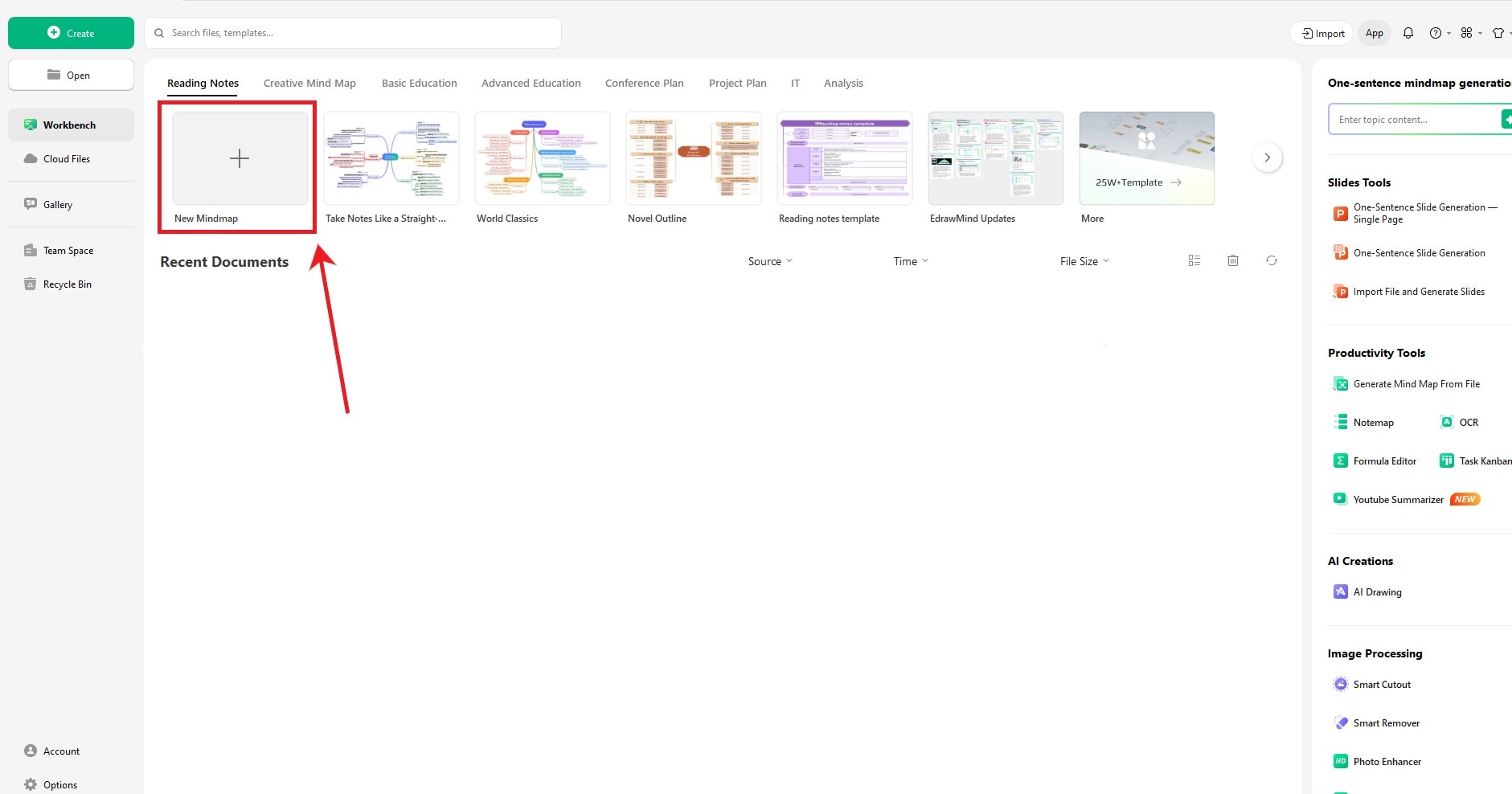
Step 2: Set the Right Layout
- Click the Main Idea and go to Layout on the floating menu.
- Select Timeline (S-shape) from the list to change the layout.
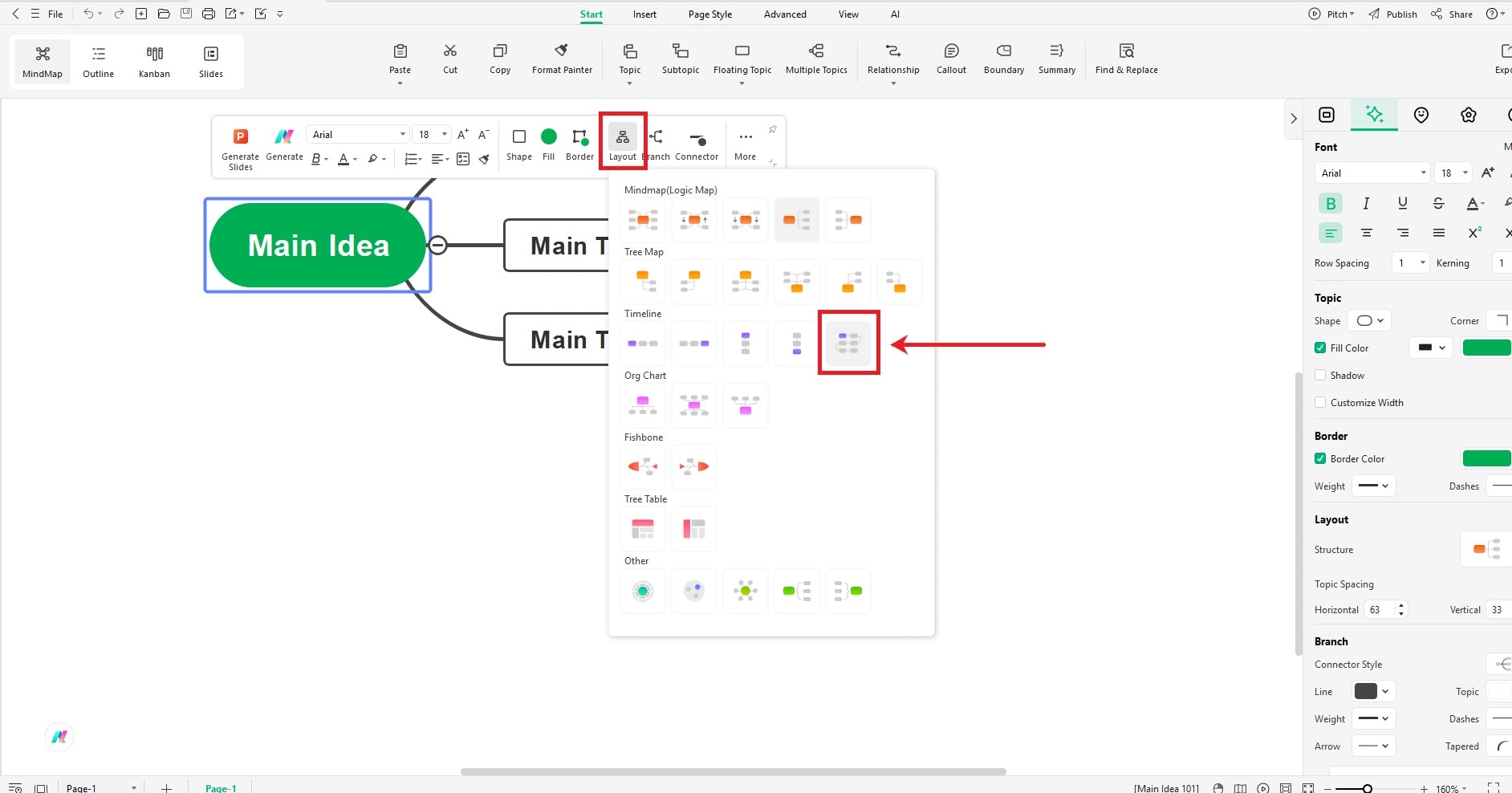
Step 3: Extend the Timeline
- There are only three main topics currently. To add new entries, select your Main Idea and click Topic from the top menu bar.
- Similarly, select a Main Topic and click Subtopic to add new subtopics.
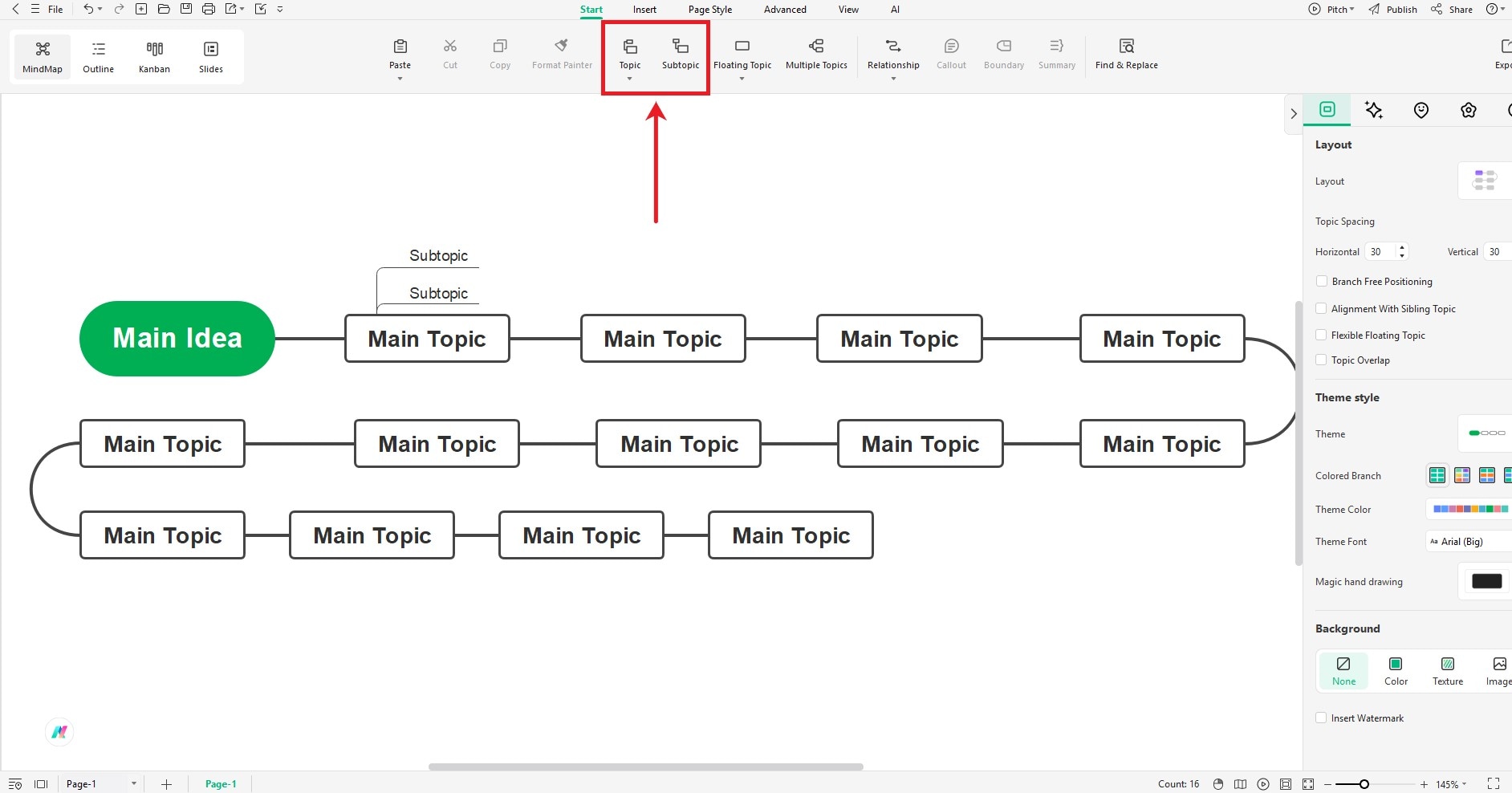
Step 4: Customize the Topics
- Select a topic and customize its shape, layout, color, style, and branch settings from the floating menu and the right toolbar.
- Pro-tip: You can also select and customize multiple topics at once.
- Click on any topic and start typing to enter new content. Now, follow the previous step to customize font settings and style.
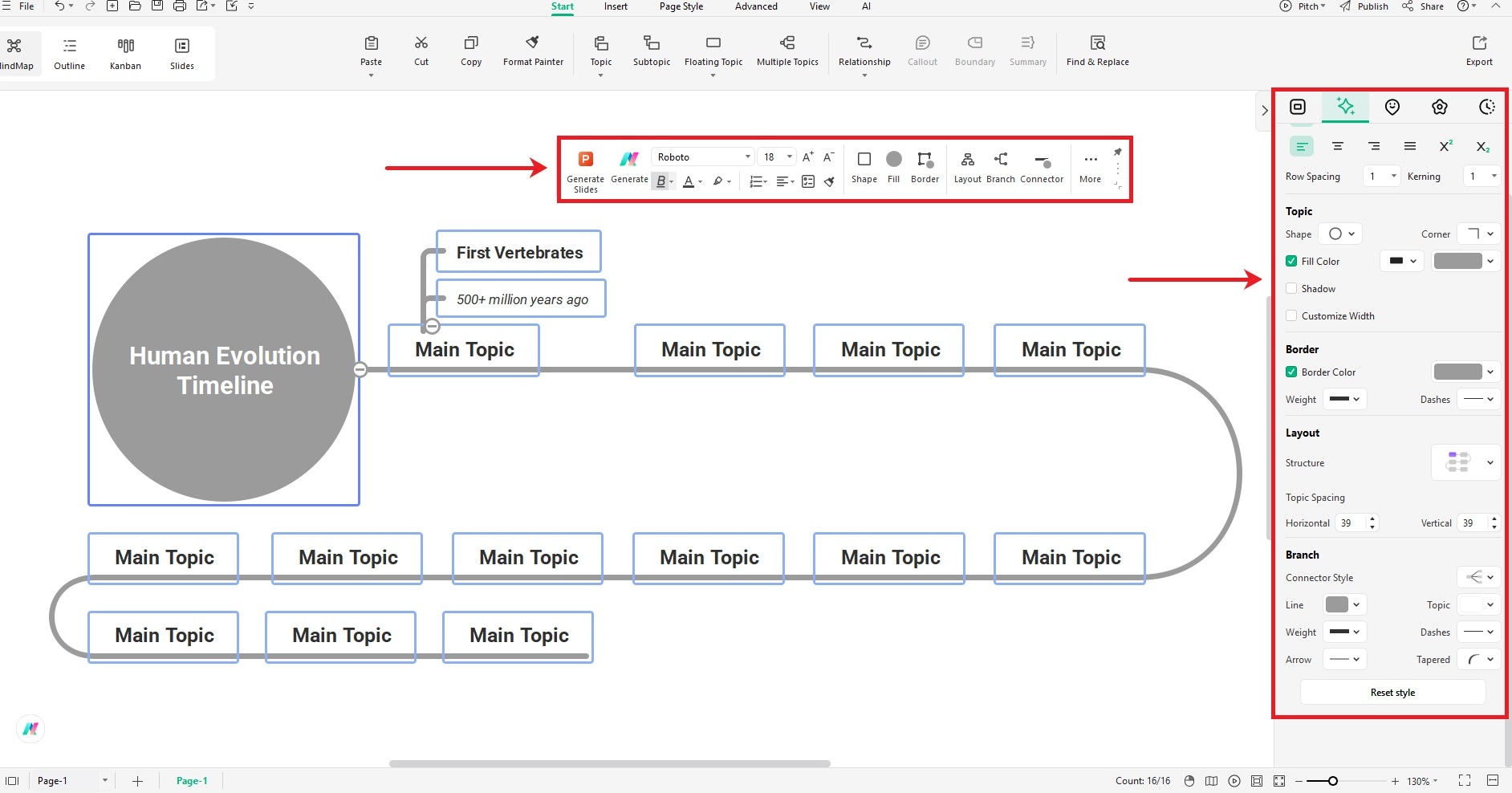
Step 5: Incorporate Images
- Copy a picture and paste it into your EdrawMind workspace.
- Now, change its settings from the right toolbar and the floating menu.
- Drag the image and drop it into any topic.
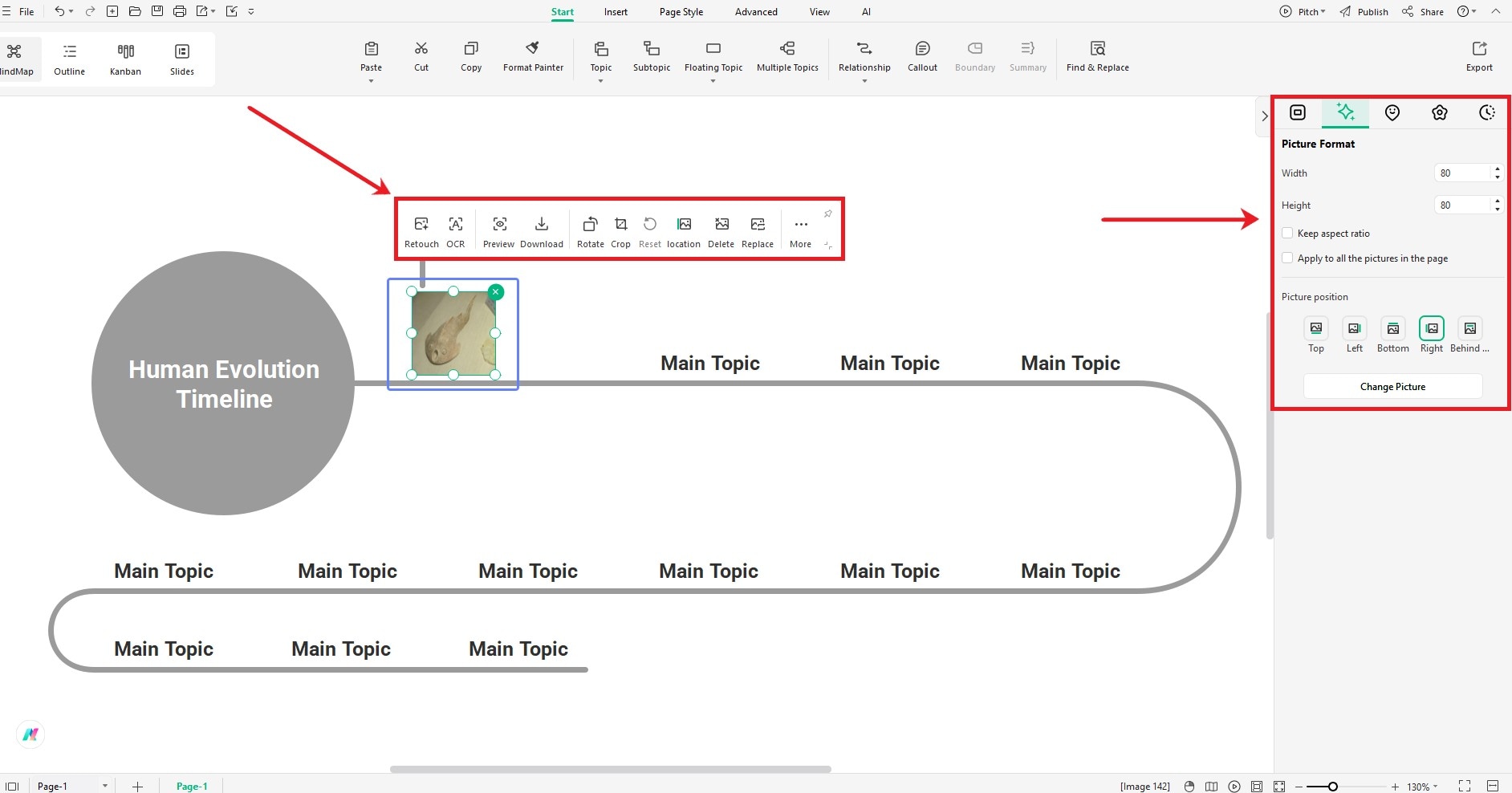
Step 6: Finalize & Save
- Once everything is done, click the File button at the top-left corner.
- Select Save to download the file on your device.
- Pro-tip: You can also Export the file and choose your required format like JPG, PNG, PDF, Word, PPT, and more.
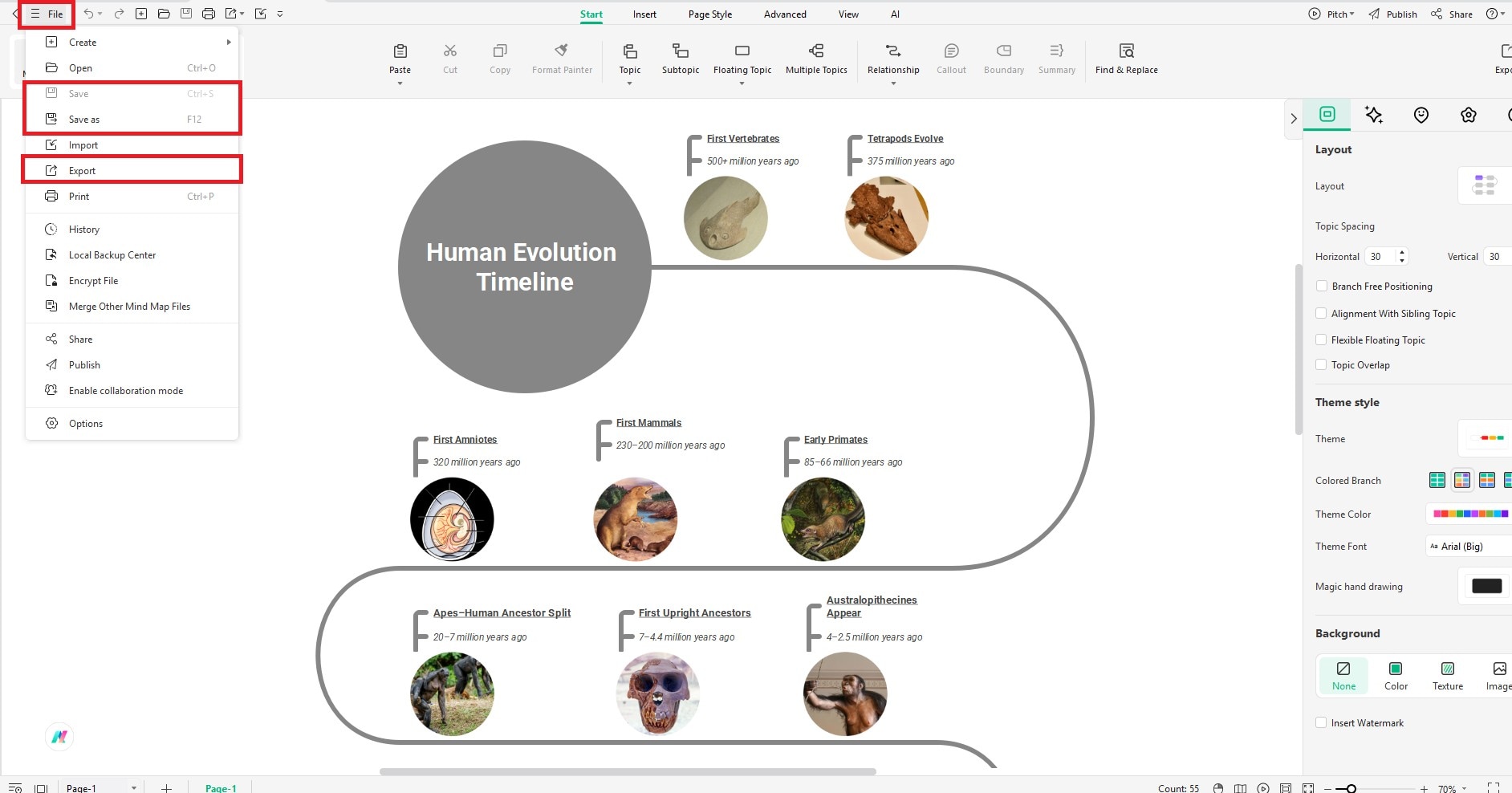
Wrapping Up
So, you made it; from the first fishy vertebrates to farming and Facebook. Kind of amazing, right? What began in ancient oceans led to cave art, fire, cities, and eventually... you, reading this timeline. Every step along the way mattered. Every ancestor played a role.
This journey isn't just about science; it's about connection. And now that you've followed it from start to finish, why not map it out yourself? With EdrawMind, you can build your own version of the human story. Whether it's for learning, teaching, or just pure curiosity, EdrawMind helps you turn big ideas into beautiful, easy visuals. Try it out and bring your evolution timeline to life.



